#405 the role you were born to play
Text
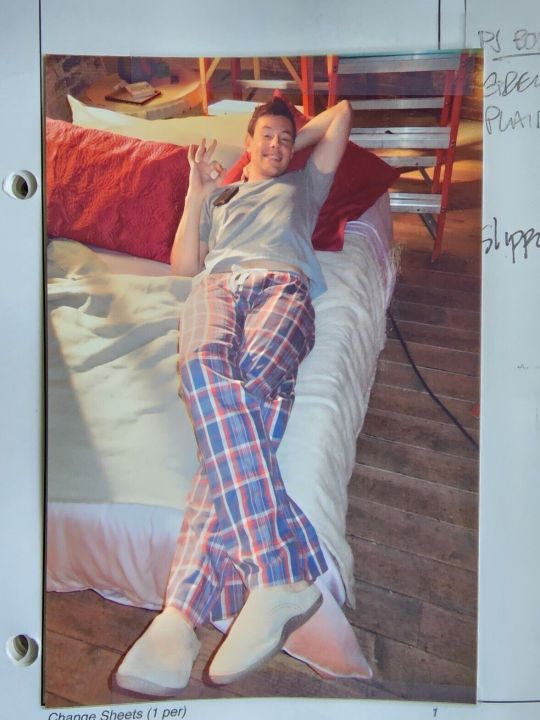



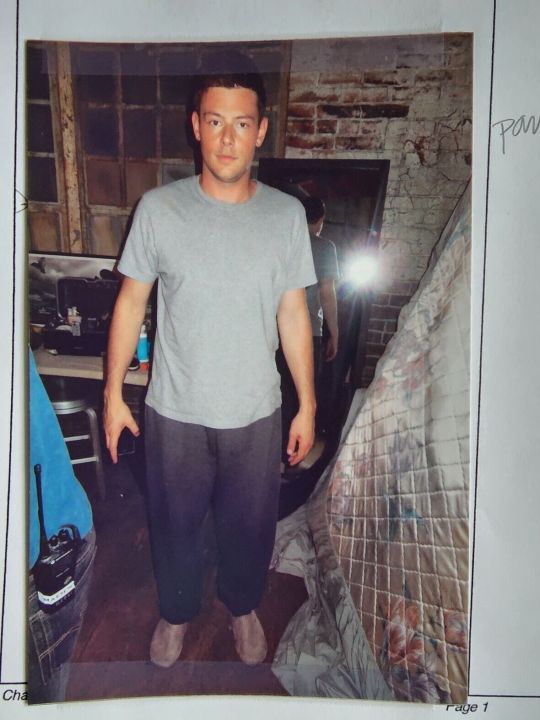

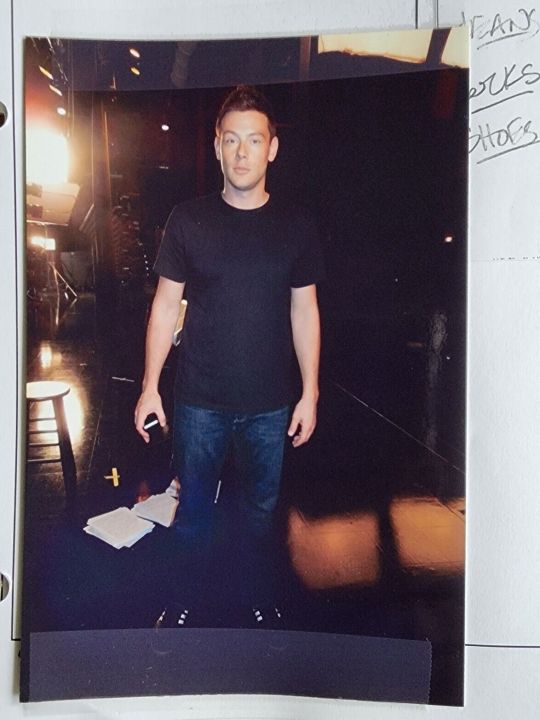

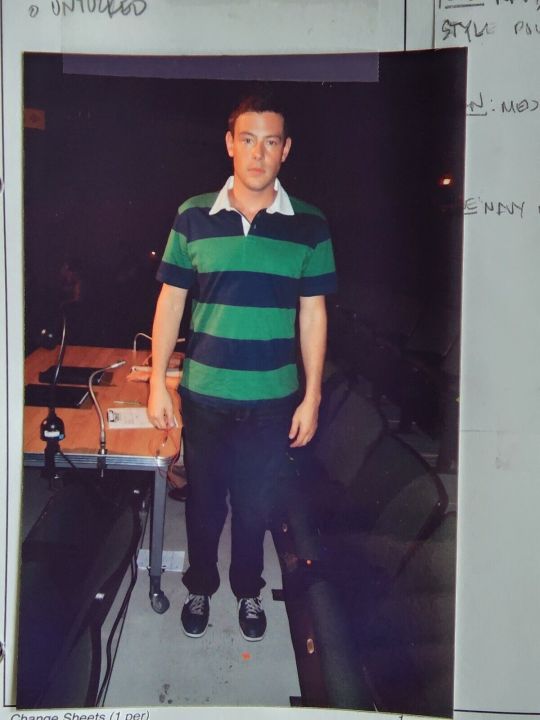



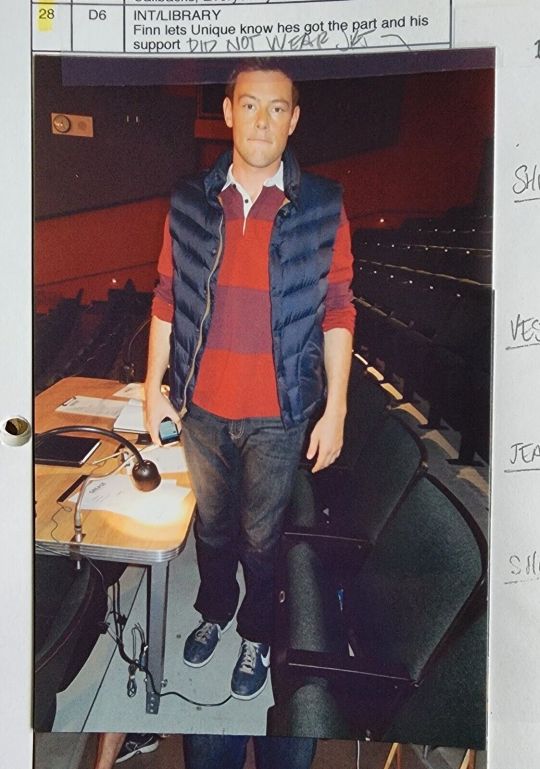
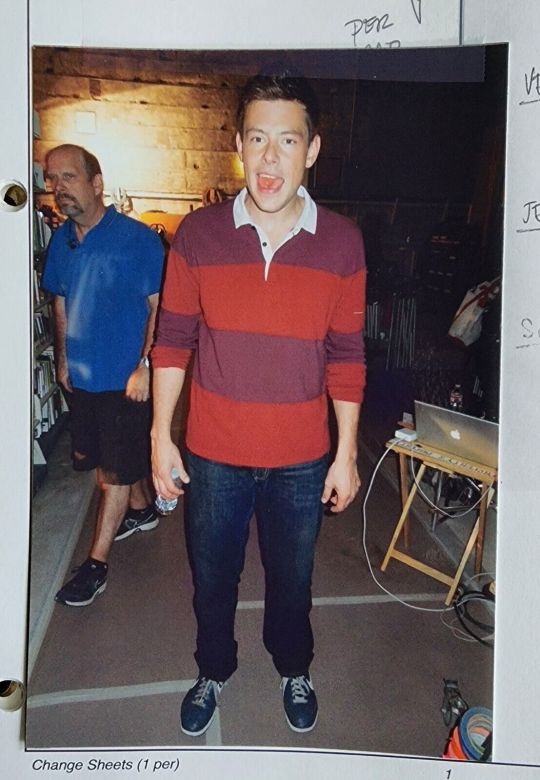


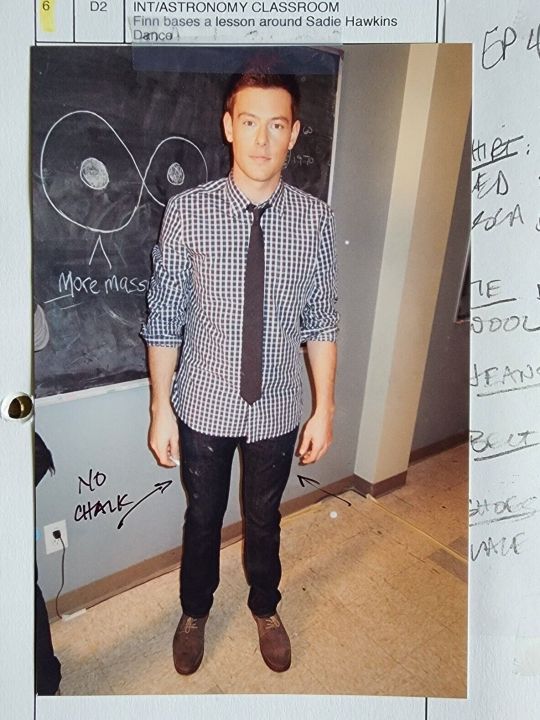

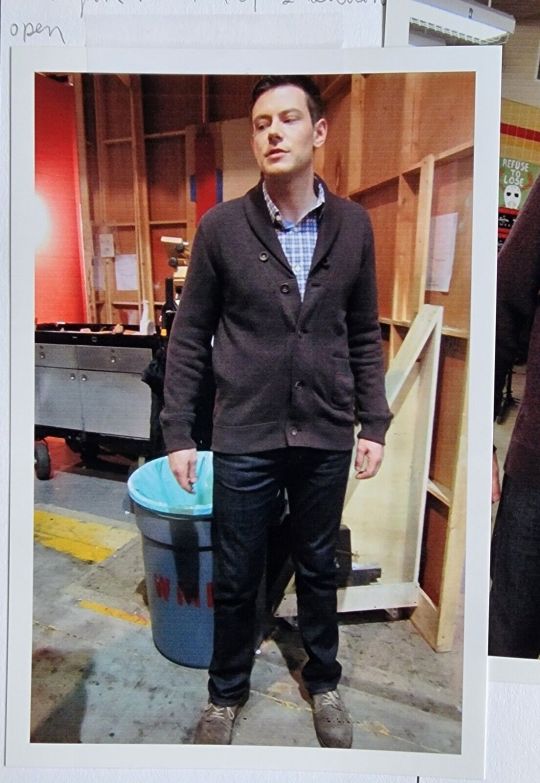
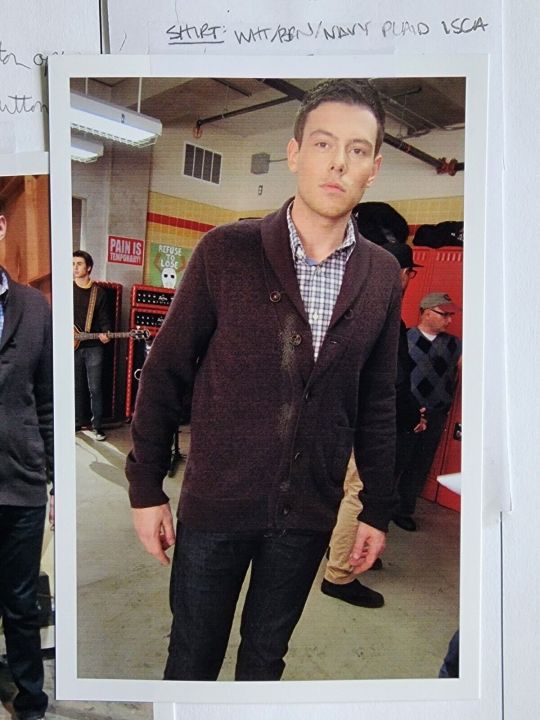
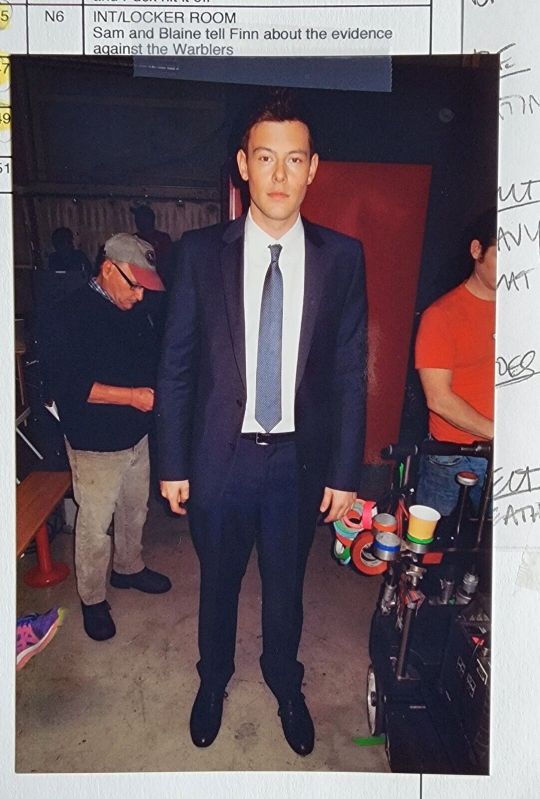
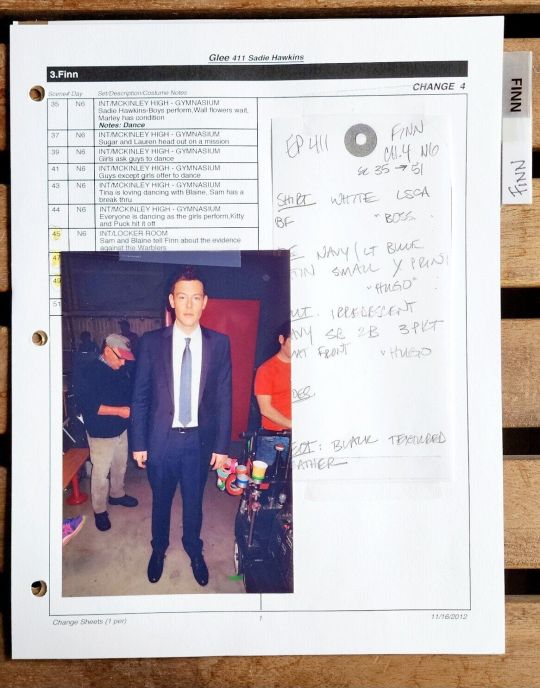
Glee TV Cory Monteith Finn Hudson (+Artie) 21 Rare Unpublished Wardrobe PhotosS4 (x)
#source: glee#ebay#cory monteith#403 makeover#404 the break up#405 the role you were born to play#411 sadie hawkins
53 notes
·
View notes
Text
Top 10 Movies of this Decade –– A Biased Reflection By Conner Miller
As this hellish decade draws to a close it only felt right to list the ten films that made it a little better. Do not expect to find all critical darlings on this. This is a place for my personal top 10 –– not Joker. Lettuce Pray:
10. Short Term 12 (2013) dir. Destin Daniel Cretton
Chances are you’ve seen Captain Marvel, Atlanta, Booksmart (more to follow), Brooklyn 99 or Bohemian Rhapsody. There’s almost no chance you’ve seen this intimate 2013 SXSW selection. Before Brie Larson was terrifying alt-right women haters and winning Academy Awards she portrayed Grace, a supervisor at a group home for troubled teens. Typically in indies like this one mid tier star is all the budget can afford. Director Destin Daniel Cretton took chances on barely known actors who used this film as a launching pad to stardom. Between Brie and Rami Malek alone there’s Academy Awards for Best Actress and Best Actor. Add in LaKeith Stanfield of Atlanta and Someone Great fame, Kaitlyn Dever of Booksmart and Unbelievable and Stephanie Beatriz from Brooklyn 99 and you’ve got enough to make a Knives Out sequel.

The shocking thing is with the immense talent featured the film’s budget was under a million dollars. Larson’s performance as Grace is layered, empathetic and revelatory. She is one of the few actresses that lets you in without words. You can see the grief and longing to help her kids she mentors in her eyes. The relationship between her and troubled teen Jayden (the magnificent as always Kaitlyn Dever) forms the film’s emotional core. Grace and Jayden lean into each other and find their tribulations aren’t dissimilar. Cretton shows a deft touch in letting the actor’s play to their strengths and allowing the camera to be still and messy allowing the group home to become a character. The film crackles with humanity and everyone involved shines bright.
There’s not an excuse to miss this one. Hop on Amazon Prime and catch it!
9. The Social Network (2010) Dir. by David Fincher
Before their ill-fated runs as Lex Luthor and Spider-Man, Jesse Eisenberg and Andrew Garfield headlined this snappy masterpiece about your grandmother’s favorite app to share slightly racist boomer memes. While Facebook has aged like milk, the film has only grown more relevant. Screenwriter Aaron Sorkin’s whiplash paced dialogue is the highlight here. There’s not a day that goes by I don’t try to work my “fuck you flip-flops” into casual conversation.
For a film about such a now mainstream app, there’s more weird shit to shake a stick at. Brenda Song (withholding calling her London Tipton) as a crazy ex who likes to burn trash! Justin Timberlake with a strange haircut as Napster founder Sean Parker! Not one, but two Armie Hammers! Early career Dakota Johnson! All of these welcome turns are grounded by Sorkin’s bubbling script. Even in limited screen-time each character’s dialogue is so unique they feel lived in and real.
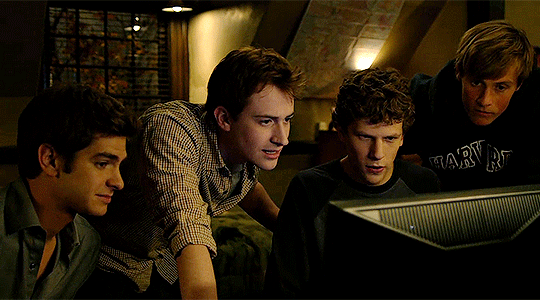
For all of David Fincher’s acclaimed films, I find this one the most accessible. This isn’t Fight Club or Se7en. His most human film by far TSN takes everything great about Fincher and condenses it into one highly enjoyable package. Sometimes his films become meandering and Sorkin’s dialogue helps dial this in. The result is a film that feels dangerously ominous considering its 2010 release date. In some ways it feels the film that defines and bridges the distinctly different presidential administrations this decade brought.
8. A Star is Born (2018) Dir. by Bradley Cooper
On paper this film looked like a dead on arrival disaster. Bradley Cooper’s directorial debut? A fourth remake of a classic movie? David Chapelle in a dramatic role? This movie rose above the memes and truly kicked me in the teeth. There’s so much to love so hey let’s get another look at it!
Blistering hot take, but the cinematography in this film by Matthew Libatique might be the best of the fucking decade. When he shoots scenes with Cooper’s Jackson Maine the camera is frenetic and unsteady. As he begins to let Lady Gaga’s Ally into his life the camera grows steadier and symbolic of their bond. Nearly every wide shot in this film looks like a painting. The concert scenes are slathered in lights that make the viewer feel like they’re on stage with Jackson and Ally. Exhibit A:

Elite framing aside the songs in this film are eternal and will always loom on my Spotify waiting to strike. “Shallow” is the ultimate karaoke song and I will always attempt to howl Lady Gaga’s eternal AHHH AHHHHH AHHHH until I am lowered into the ground.
Parks and Recreation fans will be pleased to see Hippie Ron aka Sam Elliott in an utterly dominant supporting role as Jackson’s older brother. I still write angry letters to the Academy asking why he didn’t win Best Supporting Actor. I am very PASSIONATE about this film and it is on HBO. Grab a six pack and prepare to sob.
7. “The Spectacular Now” (2013) Dir. by James Ponsoldt
This originally was going to be Whiplash, but Tyler needed to take the floor on that as a young student living in Manhattan. We do stick with Miles Teller for number seven with one of god tier studio A24′s first hits: The Spectacular Now. Admittedly any film that features Brie Larson and Kaityln Dever already has me interested, but bias aside this truly is a beautiful ride.

Late film critic Roger Ebert famously gave this film a perfect 4/4 in one of his final reviews. I’ll do Roger one more and give it a 5/4. Between the grainy film stock, the small scale stakes and the authentic characters this film just feels achievable. There’s no beam in the sky or city to save, but the stakes feel just as dire. As the main character Sutter navigates alcoholism, love and trying to understand his parents you feel for him. He’s a proxy for which everyone in high school else felt. There’s a gentle innocence in how sweet the movie is. If it is ever taken off Netflix I will be ready to storm their server room.
6. “Spider-Man: Into the Spider-Verse” (2018)
You thought you were going to escape without a Marvel film and you were almost right. The various reboots and remakes of Spider-Man this decade all featured high and low points. This animated tale, however, was transcendent. Moving the character into animation and featuring a Spider-Man of color in the lead injected much needed life into the character. I never thought i’d see the day that Spider-Man won an Academy Award, but lo and behold deviating from a cis caucasian Spider-Man brought it home.

Between the film’s electric soundtrack, unique frame rate and snappy animation it truly is the closest thing to living in a comic book. Miles’ first swing sequence is by far one of the greatest scenes in cinema – animated or non-animated. The voice acting is superb and without a doubt this film will be heavily played when I have kids over Frozen. Another one right there on Netflix waiting for you to check out!
5. “Waves” (2019) Dir. by Trey Edward Shults
One of three 2019 selections on this list (it has been a hell of a year for cinema) Waves is by far the hardest film to find on this list. Despite an extremely limited release last month I was able to catch it in cinemas. I haven’t experienced a film that better captures the dynamic of a family. The vibrant colors of South Florida evoke shades of Moonlight as the viewer is introduced to son Tyler masterfully played by newcomer Kelvin Harrison Jr. We see him navigate his senior year of high school amidst the pressures of a girlfriend, competitive athletics and the constant weight of his overbearing, but layered father (a brilliant Sterling K. Brown of This is Us fame).
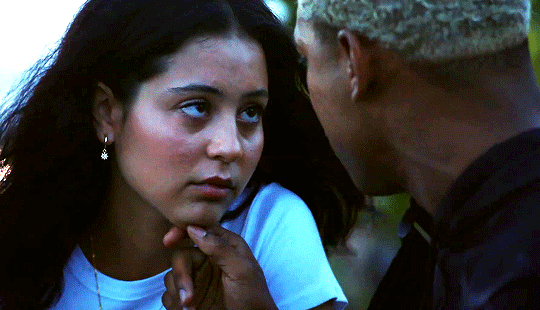
To say much about the plot is to spoil the film, but it is powerful to say the least. The film’s soundtrack is simply a miracle. The brilliant hues of neon and ocean pastels burn images in you mind as Frank Ocean, Kid Cudi, Tyler, The Creator and numerous other beloved artists weave in and out. This film literally has more than five Frank Ocean songs in it. If that isn’t convincing enough you’re on the wrong blog.
4. “Uncut Gems” (2019) Dir. by Josh and Benny Sadfie
Infinitely rewatch-able, this film is the closest simulation to living inside a pressure cooker. Adam Sandler plays the neurotic Howard Ratner with the conviction of man of his hair on fire. Even in the scenes he isn’t present his gravitas is felt in every frame. There’s really something here for everyone. Howard owes people money from his diamond store in Manhattan. As he ramps up his debt with a series of increasingly risky bets the viewer follows him night and day. Each time he seemingly as a way out the stakes only increase.

The frantic and gritty way the film is shot paired with its masterfully tense score have the film dialed up to 120 the entire runtime. It is the film equivalent of “Why are you so sweaty? I was watching Cops.” in Stepbrothers. This one just went wide release on Christmas so get out there before it leaves theaters.
3. “La La Land” (2016) Dir. by Damien Chazelle
Don’t let the infamous Best Picture swap with Moonlight fool you about the quality of this film. In his follow up to Whiplash, Chazelle takes command from the opening musical number on the overpasses of the 405 in LA. This love story of ambition between aspiring musician Seb and actress Mia has heart that few films have. It isn’t about boy meets girl. Similar to A Star is Born it is about finding the person you need to reach your dreams.

There’s few films with this level of direction. Each camera movement, lighting choice and story beat is tactile and purposeful. Emma Stone delivers a career defining performance and the Academy thankfully awarded her Best Actress. Every song on the soundtrack is an absolute banger and there’s really no excuse for not watching this one. A true gem even on my twelfth rewatch and four papers/presentations I gave on it in film school.
2. “Booksmart” (2019) Dir. by Olivia Wilde
These final two movies on the list exist on their own personal Mount Olympus. Olivia Wilde, in her directorial debut no less, creates an honest coming of age movie that’s actually a love story. Molly (Beanie Feldstein) and Amy (Kaityln Dever) are honor roll students on their final day of high school. When they realize the kids who partied and didn’t study religiously also got into Ivy League schools they set out to correct that over one crazy night.

You really won’t find a sweeter or more hopeful film. Dever and Feldstein bring electricity to their roles and won’t fail to make you laugh and cry. In a news cycle filled with hate and fear, films like this are needed. A film that’s sexually, politically and morally progressive without getting on a soapbox is nearly impossible and that’s exactly what Wilde achieved with this instant classic. I literally only have a Hulu subscription to rewatch this endlessly. I also own two different shirts of Amy and Molly. Enjoy.
1. “Lady Bird” (2017) Dir. by Greta Gerwig
If you’re still reading this far you likely know me and know what’s number one. Gerwig’s Lady Bird is nothing short of perfection. A riveting and relatable story of titular Christine “Lady Bird” McPherson’s journey navigating her senior year of high school in Sacramento at surface, but really about parents and children. Between Sam Levy’s grainy cinematography that makes the film feel like a memory, Jon Brion’s understated score and Saoirse Ronan’s dynamo performance as Lady Bird there’s so much to love. You’re this far. You don’t need to read anymore. Take a breath, pat yourself on the back and let’s hope the next decade is even better. Also Lady Bird is on Amazon Prime. Don’t forget that.

(P.S Larry McPherson is the best movie dad of all time –– fight me.)
-Conner
IG and Twitter: @connerjmill9
#moviesofthedecade#easybreiseymovies#ladybird#booksmart a24 uncutgems lalaland moviereviews waves spectacularnow spiderman starisborn
3 notes
·
View notes
Text
Chinese parents test DNA to check if kids will become prodigies
(Bloomberg) –Months after his daughter’s birth in 2017, Chris Jung dropped off a test-tube of her saliva to his company’s genetic testing lab in Hong Kong. He had grand ambitions for the baby, and was seeking clues to the future in her DNA. She might become a prominent professional, he thought, possibly even a doctor.
But Jung’s plans shifted after analysis by his firm, Gene Discovery, suggested his daughter had strong abilities in music, math and sports — though a lesser aptitude for memorizing details. As the little girl grows up, Jung said he will pour resources into developing those talents, while steering her away from professions that require a lot of memorization.
“Originally, I would like her to become a professional like a doctor or lawyer,” said Jung, chief operating officer of Good Union Corp., the parent company of Gene Discovery. “But once I looked into the results, it talked about how her memory is so bad. I switched my expectations because if I would like her to become a professional, she needs to study a lot and remember a lot.”
Read: The ‘Fat Gene’ Myth and What You Need to Know
Gene Discovery does brisk business hawking DNA tests out of a warren of rooms in Hong Kong’s Tsim Sha Tsui shopping district, near stores selling Prada bags and Dior watches. More than half of its clients are from China’s mainland, where parents eager to shape their offspring into prodigies are fueling the advance of a growing but largely unregulated industry. It’s a Chinese version of helicopter parenting that reflects the country’s tendency to push the boundaries when it comes to genetics, part of a broader race to dominate the field with ramifications for how the life-altering science is used throughout the world.
DNA Crystal Ball
While gaining in popularity across the globe, consumer genetic testing is booming in China. Delaware-based research firm Global Market Insights Inc. sees sales of DNA testing services tripling to $135 million by 2025 from $41 million last year. Others, like Beijing-based consultancy EO Intelligence, project an even faster surge in the market, to $405 million in 2022. EO Intelligence also forecasts that by then, some 60 million Chinese consumers will be using DNA testing kits, up from 1.5 million people last year.
For now, the Chinese market is a fraction of the $300 million in the U.S., but the company expects the country’s growth to edge ahead, with annual sales growing nearly 17% through 2025 compared to 15% in the U.S., according to Global Market Insights.
Gene Discovery is among a wave of companies seeking to cater to that rising demand, playing the role of modern-day fortune tellers, with DNA as their crystal ball. A search of Chinese online shopping platform JD.com and the internet in Mandarin throw up dozens of firms offering genetic talent testing for babies and newborns. Their promises are similarly lofty, vowing to help parents uncover their children’s “potential talents” in everything from logic and math to sports and even emotional intelligence. Help your child “win at the starting line” is a common marketing refrain.
In a society like China, which saw 15 million babies born last year, the appeal is clear. But many of the claims from these newly minted companies — that DNA can be used to assess ability to memorize data, tolerate stress or show leadership — are more horoscope than actual science. Critics say that in many cases even those claims rooted in science, like assessing the risk of autism, are based on early-stage research that is not yet fully understood.
Read: Healthy Living Can’t Prevent Cancer
“There’s not a scientific basis on which you can say those things with any degree of certainty,” said Gil McVean, an Oxford University geneticist who’s the director of the Big Data Institute. The center focuses on analyzing genetic and biological data to prevent and treat diseases.
Gene Discovery’s executives say they aren’t giving direct or conclusive advice — only laying out potential health risks and talents parents can use as a reference in a hyper-competitive culture. After decades of strict population control laws that were repealed in 2016, most Chinese parents still only have one child who is the focal point of their ambitions.
Big Ambitions
“DNA tests can be one of the drivers and the motivator, so parents can provide more focused resources to their kids,” said Jung. Tests sold on Gene Discovery’s website cost HKD$4,500 ($575) and include an “i-Genius package” to test toddlers for talents.
Making China one of the world’s most scientifically advanced nations is key to President Xi Jinping’s ambitions to make the country an indisputable world power, but few things illustrate the challenges that throws up than China’s fascination with genetics. Largely unencumbered by the regulations and scrutiny seen in the U.S. and other developed countries, China’s genetic strides often test the limits of science and bioethics. Last year, a Chinese researcher, He Jiankui, created the world’s first genetically altered babies, sparking a global outcry and concern the nation might usher in an era of human germline editing — where genetic modifications are passed on to future generations, altered forever.
“There’s just no way a DNA test will tell you anything that’s meaningful about complex traits”
And for every report of Chinese scientists making genuine medical breakthroughs, such as gene-editing the annihilation of a superbug, there are the more eyebrow-raising experiments: researchers cloning macaques born with genes edited to trigger mental illness, using CRISPR to breed ultramuscular beagles, or creating “super monkeys” by injecting their brains with human DNA.
DNA is the code that the human body runs on and it determines much about who we are. But scientists are still working to understand that code, with many characteristics not caused by one or two genes — but hundreds or possibly, thousands. An individual’s experiences and environment also play a major role in shaping, say, whether they’re a math genius or if they’ll develop cancer.
A person’s DNA doesn’t single-handedly determine who they are, and having a certain gene can’t predict your future. It can only suggest the likelihood of developing a condition or trait. One highly-cited 2003 study in the American Journal of Human Genetics found a compelling link between a variant of the gene ACTN3 and elite power athletes like sprinters, but studies since have found that while most sprinters have that variant, not everyone who has it is an elite athlete.
Likewise, having a harmful mutation of the BRCA gene, commonly associated with breast and ovarian cancer, doesn’t mean a person will ever develop the disease. It just means their risk is higher than others without that variant.
In recent years, genetic testing and other screening methods have led to breakthroughs in assessing cancer risk in adults, or diagnosing conditions like Down syndrome in-utero. But in China companies are taking that further, promising to deliver insight on life beyond the womb that current science often doesn’t support.
Peeking Into Future
After her baby’s birth in 2017, Zhou Xiaoying checked into a postpartum center where she was taken care of by a staff of women, cooks and traditional healers — as is the custom in China for upwardly mobile mothers. There, a sales representative from a genetic testing firm made her a tantalizing offer: For about $1,500, the company would swab saliva from her son’s mouth to offer a peek into his future.
The test, which also analyzed the baby’s predisposition to genetic diseases, told Zhou her son was likely to be gifted in music and the arts — but weak in sports. Zhou says her now two-year-old son can hum a song in tune after hearing it once, and the family is moving into a bigger house where she intends to cultivate his talents. Zhou pulled the boy out of running and swimming classes and instead plans to buy a piano and start him soon on lessons.
“I wanted to know about his talents in the future so that I can set a direction for him,” said the Shanghai mom, who used to work in the financial industry. “If you believe the results, then you can use it as a reference. If you don’t, that’s fine because it doesn’t hurt.”
Chinese tradition stresses the importance of developing the next generation, while technological advances have fueled the national obsession with DNA, said Wang Zhaochen, a bioethics lecturer in Zhejiang University.
But it’s reached a point where even the local scientific community are becoming concerned that the rise of consumer testing could “damage the authority of those real genetic tests that can really help diagnose diseases,” he said.
Though the increasingly competitive nature of child-rearing is also felt in places like the U.S. — with the college admissions scandal evidence of those pressures at work — talent testing of toddlers and babies is yet to catch on.
Unregulated Industry
In America and Europe, most consumers who take DNA tests are looking for analysis on their ancestry and health risks. The U.S. Food and Drug Administration doesn’t regulate consumer tests focused on wellness, athletic ability or other talents, but does oversee those detecting the risk of diseases like cancer. California-based 23andMe Inc. is the only company with permission to offer disease-risk DNA tests in the U.S. without the involvement of a doctor, and it was only allowed to do so after submitting its process for review to the FDA.
By contrast, China has dozens of firms selling tests that claim to give insights on medical risks for everything from cancer to mental disorders, but no clear rules to regulate them. A representative for the country’s National Health Commission said it doesn’t regulate companies offering the tests.
In Hong Kong, which just requires medical labs and those who provide genetic testing to comply with a medical registration ordinance, questions are being asked. Ramon Yuen Hoi-man, the healthcare policy vice spokesman of Hong Kong’s Democratic Party, lodged complaints this spring with agencies in the territory, concerned genetic companies offering talent testing are misleading consumers about the limitations of the tests and exaggerating the benefits of the analysis. The Food and Health Bureau has formed a steering committee to look into the regulatory and ethical issues around consumer genetic testing.
“DNA tests can be one of the drivers and the motivator, so parents can provide more focused resources to their kids,”
Sharon Shi, a finance professional based in the southern Chinese city of Shenzhen, took a train across to Hong Kong and spent nearly $4,600 to have her three-year-old tested by a company called DNA WeCheck. The company sent her a report as thick as a book. Shi, who spends a lot of time planning her daughter’s education, said the analysis helped her understand why the girl likes making up lyrics and painting free-style.
The test also told Shi that the toddler has an above-average risk of “sudden cardiac death.” To strengthen the little girl’s heart, DNA WeCheck recommended foods like celery and the edible fungus that’s used in Chinese cooking. Members of her husband’s family do have a history of heart disease, so she wasn’t surprised by the finding. While research suggests a strong link between sudden cardiac death and genetics, it’s still not fully understood.
Gene Discovery’s parent company, Good Union, sells aesthetic medical equipment, skin-care and hair-care services, and added DNA testing two years ago after executives noticed demand for talent testing among their friends. The firm, like other genetic testing companies, compares customers’ genetic data with that of reference populations in public databases and publicly available research linking genes and diseases. By comparing snippets of one genome to others, it says it can identify which specific genetic variations are linked to diseases and certain conditions.
To determine whether a child is at risk of developing Attention Deficit Hyperactivity Disorder (ADHD), Gene Discovery zeroes in on the BDNF gene, which produces instructions for manufacturing a brain protein. But the two studies the company says it bases its determinations on were at least a decade old and were conducted in the U.S., the U.K. and Ireland.
CBT Gene, the Hong Kong company that conducts testing and analysis of Gene Discovery’s kits, said it continues to use the BDNF gene since there is more current research that associates the gene as an increased risk factor for ADHD, and cited a scientific research paper published in 2016 that makes the case. It’s also possible that as the company’s research database is updated, CBT may revise its model for ADHD prediction and add other genes, said Chief Technology Officer Jay Liang.
Still, some health experts aren’t convinced.
“There’s just no way a DNA test will tell you anything that’s meaningful about complex traits,” said Timothy Caulfield, a bioethicist and health policy expert at the University of Alberta who specializes in genetics. “And these parents are changing their kids’ lives.”
–With assistance from Jinshan Hong and Shirley Zhao.
The post Chinese parents test DNA to check if kids will become prodigies appeared first on Businessliveme.com.
from WordPress https://ift.tt/2O6q5xQ
via IFTTT
0 notes
Text
The alleged betrayal described in these photos, texts, and emails cost Snapchat $158 million
When Snap Inc. filed its IPO papers with the SEC last night, it ended one of the most tantalising mysteries in tech: What happened to the third founder of Snapchat, the Stanford student who allegedly invented the concept, designed the ghost logo, and helped recruit the company's current CTO?
And, perhaps more crucially, how much did his cofounders Evan Spiegel and Bobby Murphy pay him to go away?
Now we have the answer: Snap Inc. settled with Reggie Brown for $158 million.
The money was sent in a series of payments, the last of which was $107.5 million, paid in 2016, according to the IPO.
The story of how Snap ended up paying Brown to disappear is like a heartbreaking high-school drama. It involves three friends who came up with an idea for a sexting app in the summer of 2011. They quickly realised that the app was going to be very, very successful. But the whole thing fell apart when one of the friends — Brown — overheard a conversation between the other two, and came to believe they were plotting to secretly oust him from the business.
Brown responded by withholding Snapchat's patent documents from Spiegel, and ultimately suing Spiegel and Murphy for his stake in the company.
Many of the photos, texts and emails from the early days of the founding of Snapchat were saved and disclosed in the litigation that led to the $158 million settlement.
This is how it all went down.
The summer of Snapchat
It was becoming unbearable inside the house on Toyopa Drive, just blocks from the beach near Santa Monica.
Frank "Reggie" Brown IV was staying there with his two college buddies, Evan Spiegel and Bobby Murphy. Rather than taking the summer off, the trio was working furiously on a new iPhone app. Everyone who saw it agreed it was going to be a huge hit.
Six years later, their company would file for an IPO and be valued at $25 billion.
But as the summer of 2011 wore on, the tension between Brown and his partner-roommates grew. He began eavesdropping on their conversations about him, according to a lawsuit filed in a Los Angeles court. He overheard that his friends had agreed to cut him out of the company. Even though the app was his idea, Brown came to believe that he was about to be betrayed.
They had stabbed him in the back, he says.
He would make them pay.
This is how Snapchat — and the most significant startup lawsuit since the Winklevosses sued Mark Zuckerberg over Facebook — was born. That one eavesdropped conversation inside the Toyopa Drive house would eventually cost Snapchat $158 million.
Snapchat began in California, in 2011, when Brown decided to stay with his college buddy Evan Spiegel, in Spiegel's father's house on Toyopa Drive, for the summer. They moved in together sometime after school ended, and were deep into the Snapchat project by July.
The pair became friends in the Kimball Hall dorm rooms at Stanford University, where Brown studied English and Spiegel studied product design.
The entire project — and the summer in the Toyopa Drive house — had started as nothing more than a conversation just a few weeks earlier, that spring: What if there was a way to send someone a photo which then disappeared almost immediately, thus keeping the sender in control of their own images?
Brown and Spiegel became obsessed with the idea.
According to Brown, the two original founders of Snapchat were Brown and Spiegel. Only later did they recruit a third Stanford student, Bobby Murphy, to help code and create the app, according to Brown. Murphy had studied math and computer science, also at Stanford. This distinction, and the disgreement over it, would turn out to be costly.
The three had a lot in common. They all went to Stanford. They had lots of friends in the Kappa Sigma fraternity there. They addressed each other as "dude," "dawgg" and "bro." Brown looked like he had walked out of an Abercrombie & Fitch catalog: thick blonde hair, and beefy good looks. Spiegel and Murphy were skinnier. While Spiegel had the wiry frame of an athlete, Murphy, with darker hair, was so slight he still looks like a young boy in photographs.
The app they built allowed people to send self-deleting photos, fixing the problem of having embarrassing pictures — sexts, mostly — come back to haunt you.
But as the summer wore on, tempers inside the house on Toyopa Drive grew. Brown discovered that in fact Spiegel and Murphy had become the closer pair.
The app launched in the iTunes App Store that July. It was an instant hit. On July 23, Spiegel texted Brown to say the app was taking off: "this thing is a rocket ship."
The rocket ship, however, was about to fall apart.
The eavesdropper
Spiegel and Murphy quietly began discussed cutting Brown out of the company, Brown alleged. Brown's official title was chief marketing officer, but they wanted to replace him.
What they didn't know was that Brown was listening to the conversation, and taking notes, according to papers filed in a Los Angeles County lawsuit.
The details of exactly how Brown heard their talks aren't clear.
But as the pair talked, Brown listened, and scribbled his contribution to the company in a bullet-pointed list — and what he would do if he didn't get equity. According to a copy of the note, he came up with the "initial idea" for the app, the name, and the ghost logo design. Then, he wrote:
"California Law ... Lawsuit is Possible."
A confrontation was now inevitable: Brown had thought Spiegel and Murphy were his friends, his fraternity brothers at Stanford.
He was wrong.
The "scheme"
Brown kept quiet for several more days.
He had what would later be described as a "scheme" by his former partners, according to court papers filed by Snapchat's current management. He would have to wait before he confronted them about their alleged betrayal.
The basic claims in the lawsuit are that Brown believed he was one of three founders of Snapchat, and that Spiegel and Murphy unfairly cheated him out of ownership of the app even though the original idea was his.
Lawyers for Spiegel and Murphy declined to comment when this story was originally published; emails to the two founders were not returned. Messages to Brown and his lawyers were not returned.
Snapchat is now worth a staggering $25 billion. It is one of the fastest-growing Internet services in history. It has a big, fast-growing user base, and users mean money — $405 million in revenues in 2016.
Its founders will become rich beyond their wildest dreams.
Brown's suit became the biggest startup founder case since the Winkelvoss twins settled with Facebook founder Mark Zuckerberg, in a deal worth about $300 million, over their claims that Zuckerberg stole the idea for an online college "face book."
The birth of Snapchat
The idea for Snapchat was born in the spring of 2011, according to Brown's suit. The exact origins are hazy, but it appears to have emerged from a conversation that Brown and Spiegel had while at Stanford, in the Kimball Hall dorms.
The two were friends, court papers indicate. (All three founders were members of Stanford's Kappa Sigma chapter.)
"We should make an application that sends deleting picture messages," Brown alleges he told Spiegel.
Spiegel replied it was a "million dollar idea."
Spiegel and Murphy deny that Brown originated the idea for the app.
They shook hands, the suit states. "That night, the two began searching for a computer 'coder' to join in developing the application. They then started interviewing a number of potential coders, including fellow Stanford students," according to Brown's suit.
Murphy fit the bill. He was Spiegel's friend, and the two had previously worked together on a failed project called "FutureFreshmen."
Much later, "FutureFreshmen" would turn out to play a key role in the ouster of Brown from Snapchat, although none of the three knew that yet.
As the project got rolling, the three took on distinct roles. Murphy, the newcomer, became the CTO. Spiegel was the CEO. And Brown was the chief marketing officer.
Brown assumed they had each had a one-third interest in Snapchat.
His assumption was incorrect.
"Ghostface Chillah"
One of Brown's first projects was to come up with a logo for the company. He decided on a ghost, nicknamed "Ghostface Chillah." That is still Snapchat's logo today. "Brown created this logo by directing Spiegel on what to draw, while the latter implemented Brown's direction on Adobe InDesign," the lawsuit claims.
Brown claims he did a lot of the grunt work for Snapchat, including authoring the terms of service, writing its privacy policy, the FAQ, marketing, offering language for iTunes, and he devised the name of the company that initially owned Snapchat, "Toyopa Group," after the name of the street they were living on.
At the time, they had christened the app "Picaboo" or "Pictaboo," after the child's game in which you alternately hide and reveal your face. The "boo" part explains the ghost. It also neatly ties in with the idea of photos not "haunting" you later. Brown claims "Picaboo" was his idea, too.
Brown claims "Picaboo" was his idea, too.
The app went live in iTunes on July 8, 2011.
"Yo, gurl, here's an iPhone app I think you'd love"
All that month, Brown and Spiegel emailed friends and bloggers they knew, asking them to try the app.
One recipient was Nicole James, who blogs as ThatWhiteBitch.
In his pitch email, Spiegel notes — crucially — that he has created the app with two friends of his; "certified bros."
The subject line was, "Yo, gurl, here's an iPhone app I think you'd love ..."
James immediately guessed that the app's main purpose was to make sexting safe:
Early drafts of a press release, allegedly written by Brown, were even more juvenile. This one addressed women as "betches," a slang pronunciation of "bitches":
This amateurish beginning spawned a huge success.
Snapchat's IPO could be the third most valuable IPO of all time, behind Alibaba and Facebook.
A birthday party — with cake
The guys were psyched. They planned a celebration.
On July 17, the three celebrated the "birth" of the company with a cake and candles. Spiegel's girlfriend took a picture — ironically, it was not deleted — of the cake. It featured the ghost logo in yellow icing, as the three men stood behind it, arms on each other's shoulders. She emailed it to them with the message, "The launch of something great!"
The image will be difficult to refute:
Brown was there.
At the beginning.
One of three.
The patent
Snapchat took off so quickly Spiegel began worrying that a rival company might copy their product. It was imperative that they get a patent application filed quickly, legally establishing that they were first with the idea.
Brown — who was studying to go to law school — was entrusted with the patent filing. On July 23, Spiegel texted Brown, "People know we don't have a patent so we gotta jump on that shit haha let me know if we can do anything to help ... this thing is a rocket ship."
Even Spiegel's father seemed excited about the app. Brown's mom had contacted him to ask how her son was doing. Spiegel senior sent a message back:
"It is delightful to have Reggie with us this summer as he, Evan and Bobby work on their startup … Reggie is drafting his first patent application, so he is on his way to being a lawyer!"
Those words would come back to haunt Spiegel junior: his own father seemed to believe the app was a joint project of the three.
By early August, however, Spiegel and Murphy appear to have had a change of heart.
Snapchat's future was not going to include Brown.
The name change
When the three men began working on Snapchat back in June, they formed a company. They named it Toyopa Group, after the street they were living on when they developed the app. Brown claims he came up with the name.
What Spiegel and Murphy knew, but Brown alleges he did not, is that back in June a new company had not actually been formed. Rather, Spiegel and Murphy had merely changed the name of their previous company, "FutureFreshman," to Toyopa Group.
Toyopa Group was the new, legal owner of Snapchat, the lawsuit papers state. But Brown was not among its equity holders. Toyopa was owned 60/40 by Spiegel and Murphy. Brown wasn't even named in the papers, according to a deposition transcript in the case.
Brown has testified that when the Toyopa Group papers were drawn up, he simply assumed he owned a third of the company. The three men were, after all, its only employees and they all lived together in the same house, working on the same project, which was — allegedly — Brown's original idea.
Murphy testified in a deposition that Brown was a mere functionary of the company, and never an owner:
"I don't know what he believed. All I know is that, again, he was invited to join us that summer, do some work."
Brown, of course, finally figured out the true structure of Toyopa Group when he overheard Spiegel and Murphy deciding that he had to go, in early August.
The confrontation
Brown listened in on their conversation, and took notes, according to legal papers filed by Snapchat's management.
Knowing he was about to be betrayed, Brown kept silent. Instead, on Aug. 11, 2011, Brown filed a patent application with the U.S. Patent and Trademark Office. It listed all three of them as equal co-creators of the app.
It was a huge milestone for the company, establishing Snapchat as the progenitor of self-deleting photo messages. Brown texted Spiegel:
"... you and Bobby need to celebrate this shiz tonight."
Spiegel replied:
"No chance were celebrating wo you bro."
Brown did not, however, give Spiegel or Murphy copies of the patent papers he had filed. He kept those for himself.
As Spiegel nagged Brown for copies of the filing, and as Brown stewed over his secret knowledge, the tension came to a head within the house on Toyopa Drive.
A few days later, on Aug. 16, the three men confronted each other on a conference call. Brown was in the upstairs part of the house. It is not clear from the lawsuit who was in the house and who was not, or why they didn't meet face to face. (They had been drinking, Brown said in a deposition.)
Spiegel wanted to know why Brown had not given him a copy of the patent filing. Brown wanted to know how big his slice of the company's equity was. Murphy mostly listened.
The conversation did not go well.
The gloves come off
Brown recalls it this way:
"I mean, Evan was acting irrationally, like I mentioned, earlier in the night. And I didn't know what he was going to do, you know... I mean, I didn't want to, you know, walk downstairs and try to say, you know, 'What the' -- 'What the hell are you guys talking about' and start some type of, you know -- escalate the situation. I was removing myself from the situation."
Brown alleges he was willing to take the short end of a 20/40/40 split. He did not get an agreement. The next morning, however, they made up, Brown said in a deposition:
"I was sitting outside. And, you know, they came outside, and we all had, you know, a discussion about what happened. You know, Evan apologized. He said that he was acting irrationally. ... I agreed. I said, 'Yes,' you know, 'I really think you were.' And things were fine, you know. We all apologized. It was cool."
Spiegel texted Brown a few days later:
"I want to make sure you feel like you are given credit for the idea of disappearing messages because it sounds like that means a lot to you."
That text is crucial to Brown's case: It shows Spiegel admitting that Brown should get credit for the idea of Snapchat. But there is wiggle room, too — all Spiegel is saying is that Brown should get a plaudit. He's not actually admitting that Brown was owed equity.
Murphy had a different take:
"... Evan and I had a prior conversation in which we expressed concern that he would ask for equity. And we knew that he had the original patent applications in his control. So in that phone call we wanted to hear what he thought he was entitled to given the work -- given the work he had done. He would, I say, exaggerate that. And Evan hung up and I think he -- I don't remember specifically what he was asking for, but it was a lot more than we would be willing to give him."
"And in that he claimed he had created the original idea and that he had designed the ghost. ... I think Reggie used the term, 'I directed your talents,' or something to that effect, and that's what upset Evan."
Spiegel hung up the phone when he heard that Brown thought he was directing his talent. Bobby stayed on the line. Ultimately, Murphy says Brown was told that as far as equity in Toyopa was concerned, "That's not gonna happen."
Spiegel and Murphy changed the passwords on Snapchat's server and user accounts. Brown was locked out.
What happened to the patent?
From that point, communications became more formal, the papers in the lawsuit indicate. There was no more "dude" or "dawgg." Brown and Spiegel communicated by email, in proper English. Spiegel wanted copies of the patent filing:
Brown declined to send the copies, insisting instead that Spiegel should only get the final, approved copy back from the government:
Brown was traveling. He didn't graduate from Stanford until 2012. He left the house after Aug. 17, leaving behind some of his property, the suit claims.
The damage was done. The relationship between Brown and the other two founders of Snapchat was over.
Time went by.
"I am willing to negotiate on this."
On May 8, 2012, Brown wrote a long email to Spiegel, rehashing their fight on the night of Aug. 16, 2011. In the message, Brown claims that Evan and Murphy did not in fact own the intellectual property that is Snapchat:
"I am not sure if this were due to the fact that you felt that I was withholding information from you- as that was certainly not my intention. I have always respected your role in the process, primarily as a leader, a designer, and a friend. In that way, if I disrespected your contribution, I apologize. As I expressed to Bobby this past summer, I understood both then and currently that my role in the process was of a different nature, and thus was willing to accept a significantly less portion of equity than either of you. Unfortunately, the discussions lead to you changing the passwords to the accounts and servers, limiting any continued involvement on my part and cutting off communication."
"In the summer we had discussed a 40-40-20 equity breakdown; I am, however, willing to negotiate on this."
At some point in 2012, it is not clear exactly when from the court file, Spiegel and Murphy hired the Cooley law firm to represent them. Cooley sent Brown a letter, which said in substance that Brown's handling of the patent, followed by his demand for a share in Snapchat, was:
"A transparent attempt to shakedown Mr. Spiegel and Mr. Murphy for a share in a company to which you contributed nothing."
In fact, Spiegel and Murphy argued in response to the suit, Brown was kicked out of the company because they became suspicious when he repeatedly declined to hand over copies of the patent filing. "Spiegel and Murphy excluded Brown from further involvement due to his duplicity," their side of the case states.
Spiegel and Murphy also note that Brown didn't protest legally until after he learned that Snapchat had obtained $20 million in debt financing in May 2012.
The fundamental split between developers and management
Brown potentially stands to win damages in the hundreds of millions of dollars, so it is perhaps not surprising that the litigation has been of the "scorched earth" variety. Brown's lawyers unsuccessfully challenged Snapchat's lawyers on whether they have a conflict of interest that prevented them from representing the company.
On a factual basis, Brown has put up a good argument that he was intimately involved in the genesis of the app. He was involved in the "idea," the name of the company, its logo and its patent filing.
But his role at Snapchat militates against him, also.
Anyone can have ideas.
Brown was not involved in the building of the actual software product, the lawsuit alleges. None of the evidence indicates Brown was involved in the engineering, the coding, the development, of the app.
Nonetheless, his work was crucial — he was the only one of the three founders with enough knowledge to handle a USPTO patent application.
By contrast, Spiegel and Murphy apparently spent the summer of 2011 writing code and making sure the app worked.
It's a familiar tension in the tech world. There are those who build the products, and those who manage the work that's being built. Naturally, developers resent their non-technical managers and supervisors. But few companies survive without managers who make sure the trains run on time, and file patents before their competitors.
The case sets a standard in the tech and startup community. It shows, as stated by Brown's lawyers, that not being clear from the beginning about who owns a new company can cost end up costing you a lot of money:
"This is a case of partners betraying a fellow partner."
The alternative interpretation was Spiegel and Murphy's take, that Brown was an exaggerator, a hanger-on, who deserved nothing:
"Knowing he had no agreement to share in the equity of Toyopa, and having noted to himself 'lawsuit possible,' Brown sought to hijack ownership rights he knew he did not possess by secretly filing an application that (1) claimed the entirety of the disappearing messages application, not just the screen capture detection technology; (2) listed himself as an inventor.
The settlement took years to work out.
But the $158 million deal was larger than the amount Mark Zuckerberg initially agreed to pay the Winkelvoss twins — $65 million — for their role in the creation of Facebook at Harvard.
SEE ALSO: Here's who is going to get rich from the Snap IPO
Join the conversation about this story »
0 notes
Text
















Glee TV Handsome Jacob Artist Jake Puckerman 16 Rare Unpublished Wardrobe Photos (x)
7 notes
·
View notes
Text















Glee TV Show Blake Jenner Ryder Lynn 16 Rare Unpublished Wardrobe Photos 405,407 (x)
4 notes
·
View notes
Text







Glee TV Show Jane Lynch Sue Sylvester 7 Rare Unpublished Wardrobe Photos 405,418 (x)
1 note
·
View note
Text

















Glee TV Darren Criss Blaine Anderson 9 Rare Unpublished Wardrobe Photos 405,6,8 (x)
Glee TV Genuine original, totally unique Production Wardrobe Bible Costume-Test Continuity Photos (9) different of Darren Criss as "Blaine Anderson" for Season 4, episode 405 "The Role You Were Born to Play", 406 "Glease" and 408, "Thanksgiving". Obtained directly from the on set, production created "wardrobe bible" binder which contained unique, one only existing, costume test photos for continuity in filming, essential for any necessary retakes, with the exception of close and longer view prints of the same shots.
1 note
·
View note
Text










Glee TV Show Melissa Benoist Marley Rose 10 Rare Unpublished Wardrobe Photos 405 (x)
1 note
·
View note